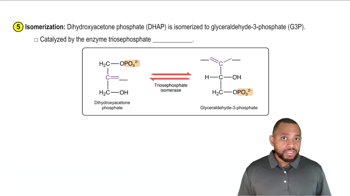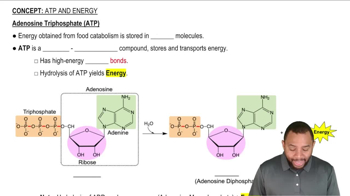Multiple Choice
Which one of the following molecules is a source of energy in the energy-consuming phase of glycolysis?
 Verified step by step guidance
Verified step by step guidance Verified video answer for a similar problem:
Verified video answer for a similar problem:



 2:16m
2:16mMaster Intro to Glycolysis Concept 1 with a bite sized video explanation from Jules
Start learning